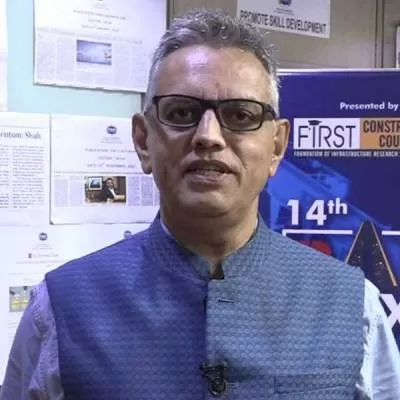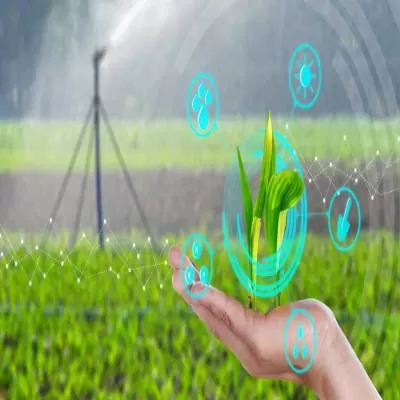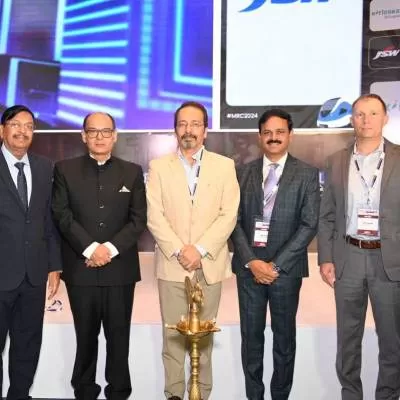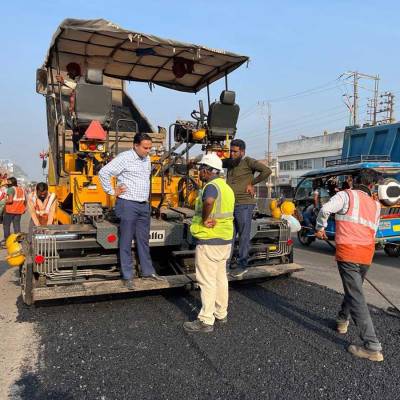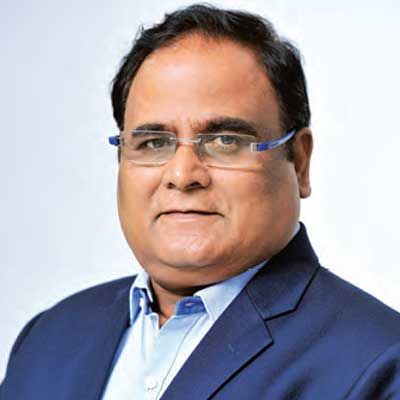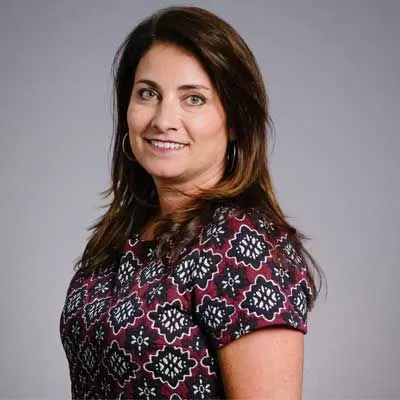- Home
- Technology
- Grounded in his passion

Grounded in his passion
"If you love what you do, the sky is the limit to what you can achieve," he asserts. Manish Kumar, Vice-President, ITD Cementation India Ltd (ITDC) clearly loves what he does-geotechnical engineering is not only his forte but his passion too. He enjoys nothing more than tackling the challenges posed by entities below the ground and countering them with geotechnical solutions.
"Ground variations are amazing!" he says, with excitement that is palpable. "Not only do they differ from site to site but you find diverse conditions even within the same site. Like fingerprints, you never find two identical ground conditions. Likewise, there is no universal solution. It is fascinating!" It was this fascination that prompted him to pursue a postgraduate degree in geotechnical engineering in the US. After that, he worked in the US for about four-and-a-half years handling over a hundred projects, ranging from a simple McDonalds restaurant to the complex $1.5 billion Advance Solid Rocket Motor project for NASA. He returned to India in 1993 despite having a green card. "The green card was secured only as a contingency measure; I wanted to learn whatever I could in the shortest time possible and return to India as I wanted to do something for our country," reveals Kumar. No doubt, there were some anxious moments. "I was ready to compromise on the materialistic part but not on the job satisfaction aspect," he goes on. "I made a short visit to India and met a dozen companies to see what they can offer in terms of work satisfaction. Then, I made up my mind to join ITDC (then Kvaerner Cementation India). I am glad I did."
There's been no looking back since. Now, as vice-president and overseeing the operations of the special engineering division dealing with geotechnical aspects, Kumar says his family's support has contributed immensely to his success. In his view, everyone should have a vision and keep moving towards it at whatever pace they can. "If you can't fly then run, if you can't run then walk, if you can't walk then crawl, but whatever you do you have to keep moving forward," he says, quoting Martin Luther King Jr. Read more about his views and experiences:
Home and abroad
As far as people and resources are concerned, there is not much difference between India and the US. On the qualification, intellect and skill levels, we are very comparable with the Americans. Our people go there and do very well. But when they come back, they are unable to contribute to the same extent owing to the drawbacks in our systems. For example, if I want to do an excavation in the US, I just have to call a phone number. They, in turn, get in touch with all the utilities and within 72 hours get every utility line properly marked on the surface. In India, no one has any kind of mapping of underground utilities. So we have to do a manual excavation that takes time. So does land acquisition, evacuation of people, etc. In the US, everything is systematic, the laws are very good, contracts are fair and everybody works as a team.
Challenges ahead
With India poised for massive infrastructure development, civil engineers have to shoulder immense responsibility and we have to gear up for it. Technology is changing fast and what we studied 20 years ago may not be relevant today. Hence, civil engineers, including geotechnical engineers, must make a conscious effort to upgrade their knowledge. We should arm ourselves with new technologies and methodologies, and find innovative solutions for speedy implementation of projects without compromising on quality and safety. That will be the major challenge for us all.
Inadequate investigations
Soil investigation is a very important part of any project but unfortunately it is not being given due importance in India. It is largely considered a necessary evil and a formality. As a result, we get unreliable data that eventually leads to problems and disputes. The cost of soil investigations is less than 5 per cent of the total project cost, including engineering, procurement and construction. Yet most owners/clients hesitate to spend on it. The owners should be made aware of its importance and how a few thousands spend today can save crores later.
The Indian psyche
We must learn to value safety and quality. Even the most advanced countries can ill-afford the repercussions of poor quality. India definitely cannot. If we build a structure, we accept that it will require rehabilitation after 15 years. Why can't we build something that will last for 60 to 80 years with minimum maintenance? If somebody analyses the cost of rehabilitation, they will value the initial cost of quality. We are over conscious about initial costs and tend to ignore long-term benefits. We should also learn to value time. We often get trapped in delaying decisions and we accept this as normal. Saving on time also means saving on money as establishment costs come down if the whole exercise is done faster.
Technology track
In new technologies, spun concrete pile is yet to come to India in a big way. Wherever driving is possible, these piles are excellent as we can save almost 50 per cent of natural resources like concrete, cement and aggregate, and 50-55 per cent of steel, a huge saving on material costs. In ground improvement, lime soil mixing is not practiced in India yet. Many other new technologies are also not used and ITDC has been trying to bring them in. However, there are some roadblocks. IS codes have to be upgraded as, otherwise, these technologies are not accepted, more so for government projects. Many clients are also reluctant to try out technologies not implemented in India despite them being used abroad for several years. Further, when you bring in new technology, there is an initial cost that many are reluctant to invest in, despite the fact that they stand to gain in the long run.
TRACK RECORD
Manish Kumar
Academic:
- 1985: B Tech (Civil) from Indian Institute of Technology - Mumbai
- 1990: Master of Science in geotechnical engineering from Auburn University, Alabama, USA
Professional
- 1985-1986: Graduate Civil Engineer Trainee, Tata Electric Companies, Mumbai
- 1987: Graduate Research Assistant, Auburn University, Alabama, USA
- 1987-1988: Graduate Teaching Assistant, Auburn University
- 1988-1993: Geotechnical Engineer, Law Engineering Inc., Alabama
- 1993-1996: Manager/Sr. Manager - Marketing & Technical Services, Kvaerner Cementation India Ltd, Mumbai
- 1997-2004: Deputy/Assistant General Manager - Technical Services, Skanska Cementation India Ltd (Formerly Kvaerner Cementation India Ltd), Mumbai 2005 to date: ITD Cementation India Ltd (Formerly Skanska Cementation India Ltd), Mumbai. Was Senior General Manager/General Manager until 2010 and then moved up the ladder to become Vice-President
- Participated in several national and international conferences, seminars
- Presented/published several technical papers on various aspects of geotechnical engineering
Challenging Projects
Project 1
Project: Crude oil storage facility, Mundra, Gujarat
Period: 2005-2006
Project cost: Rs 60.5 crore
Client: LN Mittal Group
Contractor: ITD Cementation India Ltd
Scope: Erection of crude oil storage facility comprised 14 tanks supported on RCC-driven, cast in situ piles of 560-mm diameter. The safe capacity of the pile was 110 tonne and estimated length was 15 m. Scope included sand filling (43,491 cu m), earth filling (77,596 cu m), driven, cast-in-situ piles (8,809), reinforcement (4,800 tonne) and 87 initial and routine tests.
Unique technology: An indigenous pneumatic hammer of 5.4 tonne ram weight developed in-house by ITDC was used as against conventional drop hammer technology and skid rigs. Mounted on a crawler crane for better mobility, this hammer could not only yield 38 to 40 blows per minute as against 13 to 14 blows with the conventional technology, but reduce transit time between piles. "This indigenous technology, which was used for the first time commercially, was the key factor in achieving higher productivity rates," reveals Kumar. "On average, we could install 28 to 29 piles per day per rig, which is much higher than the 10 or 11 piles generally installed with the conventional method."
Challenges: It was a remote site with minimum facilities and hence considerable resources had to be mobilised, including batching plants, rigs, a mechanical team with complete inventory of spares, etc. Completing the project on time was another major challenge, according to Kumar. "The total project duration was only six months including mobilisation and initial pile tests," he says. "The working piles could be started only after a few initial tests were completed, leaving just about four-and-a-half months to complete 8,809 piles along with testing." Despite all these odds, the project was completed successfully, belying the client's initial anxiety. "Originally the client wanted to split the work between two contractors," he adds. "We convinced the client to give us the total work. They agreed but with a penalty clause if we failed to deliver. We completed the project three weeks ahead of schedule and got a bonus of Rs 32 lakh."
Project 2
Project : Reclamation using controlled fill and band drains
Period: 1997-1998
Project cost: Rs 13 crore
Client: Nava Sheva International Container Terminal Ltd, Jawaharlal Nehru Port Trust (JNPT)
Contractor: ITD Cementation India Ltd
Background: JNPT planned to construct a container yard with commercial buildings on 21 hectare of reclaimed land from the sea. The ground at the proposed project site contained soft, highly compressible marine clay extending to depths ranging from 4 m to 11 m below seabed level.
Scope: Site exploration to establish the depth, thickness and properties of the soft compressible zone; pre-consolidation of existing compressible soils; treating the soft clays in-situ to gain sufficient strength to support the fill and subsequent container loading; monitoring settlements and engineering the fill placement sequence. The site was divided into seven sub-areas based on the thickness of the compressible layer, anticipated loading and construction priority. Methodology: Band drains were installed on the ground to accelerate the consolidation process. A 500-mm-thick sand blanket was put on top of the fill with 30 mm of band drain protruding into this sand layer that helped remove the water coming out through the band drains to get out of the consolidating system. On top of this sand filter, a non-woven geotextile was placed to act as a physical separator between the sand blanket and the fill soils on top. An elaborate field instrumentation programme was developed to ensure that pore pressure dissipation and settlements were continuously monitored and the construction programme revised, if required, based on the actual performance of the vertical drains and marine clay.
Challenges: Consolidating reclamation of this size with such thick marine clay layer with virtually no initial load carrying capacity was a big challenge. "The soil condition ruled out any customary reclamation and a special engineered programme had to be developed meeting the technical, commercial and time schedule requirements," shares Kumar. "Apart from soil testing, it involved considerable engineering, instrumentation and monitoring. We went in for the band drains method as it was effective and faster. Otherwise, it would have taken over 12 years for 90-per-cent consolidation to take place."
Project 3
Project: Remedial measures for slope stability at Cabo Hills, Goa
Period: 2006 (first phase) and 2011 (second phase)
Cost: Rs 4.45 crore and Rs 10.73 crore
Client: Goa government
Contractor: ITD Cementation India Ltd
Background: The governor's bungalow located on Cabo Hills at a height of 40 m above sea level was built by the Portuguese over 400 years ago. Surrounded by the sea on three sides, the hillock began to exhibit signs of sliding in the year 2000. The bungalow also began to develop large cracks. While the Geological Survey of India carried out the required investigations, ITDC was entrusted with the task of arresting the sliding and ensuring the safety of the bungalow. The sliding was occurring along a definite shear plane in the weak rock and the toe of the slip surface extended till the bottom of the slope. The first phase of the project executed in 2006 was well-instrumented and monitored for the next two years. The second phase commenced in 2011 after ensuring that desired stability was achieved from the operations in the first phase.
Remedial measures: These involved the use of rock anchors on a specific grid pattern arrangement, micro piles to act as shear interceptors, berm at the slop bottom and grouting to fill voids and crevices. Pre-stressed rock anchors at 4-m staggered spacing and extending beyond the pre-identified failure surface served to stitch the moving mass with the non-moving core of the hillock. A network of RCC grade beams was utilised as a bearing surface to facilitate pre-stressing and to distribute the pre-stress over a larger area. Vertical and raker micro piles of 150-mm diameter were utilised to act as shear interceptors at mid height through the moving mass. The piles were constructed using four 20-mm diameter rebars as main reinforcement and M20 grade concrete made using 6-mm MSA.
Challenges: The entire work was carried out on the slope that was showing signs of instability. The slope's surface was strewn with boulders of various sizes, along with vegetal growth and matured jungle, much of which could not be removed due to environmental concerns. These inhibited movement, installation of equipment, supply of material, erection of scaffoldings and platform for drilling. Boulders had to be disintegrated to facilitate slope profiling. "Drilling and anchoring were problematic; cavities and crevices were encountered and had to be punctuated with consolidation grouting to fill them up before drilling operations could proceed," adds Kumar. "While work was in progress, an existing buttressed retaining wall along the slope showed signs of disequilibrium and was dangerously poised. This wall had to be removed right from its foundation and the hollow portion grouted. However, despite several unforeseen surprises and obstacles, the work proceeded with on-the-spot remediation."
To share your engineering experience with us, write in at feedback@ASAPPmedia.com
In the next in a series of interviews with prominent civil engineers, JANAKI KRISHNAMOORTHI meets Manish Kumar, Vice-President, ITD Cementation India Ltd "If you love what you do, the sky is the limit to what you can achieve," he asserts. Manish Kumar, Vice-President, ITD Cementation India Ltd (ITDC) clearly loves what he does-geotechnical engineering is not only his forte but his passion too. He enjoys nothing more than tackling the challenges posed by entities below the ground and countering them with geotechnical solutions. "Ground variations are amazing!" he says, with excitement that is palpable. "Not only do they differ from site to site but you find diverse conditions even within the same site. Like fingerprints, you never find two identical ground conditions. Likewise, there is no universal solution. It is fascinating!" It was this fascination that prompted him to pursue a postgraduate degree in geotechnical engineering in the US. After that, he worked in the US for about four-and-a-half years handling over a hundred projects, ranging from a simple McDonalds restaurant to the complex $1.5 billion Advance Solid Rocket Motor project for NASA. He returned to India in 1993 despite having a green card. "The green card was secured only as a contingency measure; I wanted to learn whatever I could in the shortest time possible and return to India as I wanted to do something for our country," reveals Kumar. No doubt, there were some anxious moments. "I was ready to compromise on the materialistic part but not on the job satisfaction aspect," he goes on. "I made a short visit to India and met a dozen companies to see what they can offer in terms of work satisfaction. Then, I made up my mind to join ITDC (then Kvaerner Cementation India). I am glad I did." There's been no looking back since. Now, as vice-president and overseeing the operations of the special engineering division dealing with geotechnical aspects, Kumar says his family's support has contributed immensely to his success. In his view, everyone should have a vision and keep moving towards it at whatever pace they can. "If you can't fly then run, if you can't run then walk, if you can't walk then crawl, but whatever you do you have to keep moving forward," he says, quoting Martin Luther King Jr. Read more about his views and experiences: Home and abroad As far as people and resources are concerned, there is not much difference between India and the US. On the qualification, intellect and skill levels, we are very comparable with the Americans. Our people go there and do very well. But when they come back, they are unable to contribute to the same extent owing to the drawbacks in our systems. For example, if I want to do an excavation in the US, I just have to call a phone number. They, in turn, get in touch with all the utilities and within 72 hours get every utility line properly marked on the surface. In India, no one has any kind of mapping of underground utilities. So we have to do a manual excavation that takes time. So does land acquisition, evacuation of people, etc. In the US, everything is systematic, the laws are very good, contracts are fair and everybody works as a team. Challenges ahead With India poised for massive infrastructure development, civil engineers have to shoulder immense responsibility and we have to gear up for it. Technology is changing fast and what we studied 20 years ago may not be relevant today. Hence, civil engineers, including geotechnical engineers, must make a conscious effort to upgrade their knowledge. We should arm ourselves with new technologies and methodologies, and find innovative solutions for speedy implementation of projects without compromising on quality and safety. That will be the major challenge for us all. Inadequate investigations Soil investigation is a very important part of any project but unfortunately it is not being given due importance in India. It is largely considered a necessary evil and a formality. As a result, we get unreliable data that eventually leads to problems and disputes. The cost of soil investigations is less than 5 per cent of the total project cost, including engineering, procurement and construction. Yet most owners/clients hesitate to spend on it. The owners should be made aware of its importance and how a few thousands spend today can save crores later. The Indian psyche We must learn to value safety and quality. Even the most advanced countries can ill-afford the repercussions of poor quality. India definitely cannot. If we build a structure, we accept that it will require rehabilitation after 15 years. Why can't we build something that will last for 60 to 80 years with minimum maintenance? If somebody analyses the cost of rehabilitation, they will value the initial cost of quality. We are over conscious about initial costs and tend to ignore long-term benefits. We should also learn to value time. We often get trapped in delaying decisions and we accept this as normal. Saving on time also means saving on money as establishment costs come down if the whole exercise is done faster. Technology track In new technologies, spun concrete pile is yet to come to India in a big way. Wherever driving is possible, these piles are excellent as we can save almost 50 per cent of natural resources like concrete, cement and aggregate, and 50-55 per cent of steel, a huge saving on material costs. In ground improvement, lime soil mixing is not practiced in India yet. Many other new technologies are also not used and ITDC has been trying to bring them in. However, there are some roadblocks. IS codes have to be upgraded as, otherwise, these technologies are not accepted, more so for government projects. Many clients are also reluctant to try out technologies not implemented in India despite them being used abroad for several years. Further, when you bring in new technology, there is an initial cost that many are reluctant to invest in, despite the fact that they stand to gain in the long run. TRACK RECORD Manish Kumar Academic: 1985: B Tech (Civil) from Indian Institute of Technology - Mumbai 1990: Master of Science in geotechnical engineering from Auburn University, Alabama, USA Professional 1985-1986: Graduate Civil Engineer Trainee, Tata Electric Companies, Mumbai 1987: Graduate Research Assistant, Auburn University, Alabama, USA 1987-1988: Graduate Teaching Assistant, Auburn University 1988-1993: Geotechnical Engineer, Law Engineering Inc., Alabama 1993-1996: Manager/Sr. Manager - Marketing & Technical Services, Kvaerner Cementation India Ltd, Mumbai 1997-2004: Deputy/Assistant General Manager - Technical Services, Skanska Cementation India Ltd (Formerly Kvaerner Cementation India Ltd), Mumbai 2005 to date: ITD Cementation India Ltd (Formerly Skanska Cementation India Ltd), Mumbai. Was Senior General Manager/General Manager until 2010 and then moved up the ladder to become Vice-President Participated in several national and international conferences, seminars Presented/published several technical papers on various aspects of geotechnical engineering Challenging Projects Project 1 Project: Crude oil storage facility, Mundra, Gujarat Period: 2005-2006 Project cost: Rs 60.5 crore Client: LN Mittal Group Contractor: ITD Cementation India Ltd Scope: Erection of crude oil storage facility comprised 14 tanks supported on RCC-driven, cast in situ piles of 560-mm diameter. The safe capacity of the pile was 110 tonne and estimated length was 15 m. Scope included sand filling (43,491 cu m), earth filling (77,596 cu m), driven, cast-in-situ piles (8,809), reinforcement (4,800 tonne) and 87 initial and routine tests. Unique technology: An indigenous pneumatic hammer of 5.4 tonne ram weight developed in-house by ITDC was used as against conventional drop hammer technology and skid rigs. Mounted on a crawler crane for better mobility, this hammer could not only yield 38 to 40 blows per minute as against 13 to 14 blows with the conventional technology, but reduce transit time between piles. "This indigenous technology, which was used for the first time commercially, was the key factor in achieving higher productivity rates," reveals Kumar. "On average, we could install 28 to 29 piles per day per rig, which is much higher than the 10 or 11 piles generally installed with the conventional method." Challenges: It was a remote site with minimum facilities and hence considerable resources had to be mobilised, including batching plants, rigs, a mechanical team with complete inventory of spares, etc. Completing the project on time was another major challenge, according to Kumar. "The total project duration was only six months including mobilisation and initial pile tests," he says. "The working piles could be started only after a few initial tests were completed, leaving just about four-and-a-half months to complete 8,809 piles along with testing." Despite all these odds, the project was completed successfully, belying the client's initial anxiety. "Originally the client wanted to split the work between two contractors," he adds. "We convinced the client to give us the total work. They agreed but with a penalty clause if we failed to deliver. We completed the project three weeks ahead of schedule and got a bonus of Rs 32 lakh." Project 2 Project : Reclamation using controlled fill and band drains Period: 1997-1998 Project cost: Rs 13 crore Client: Nava Sheva International Container Terminal Ltd, Jawaharlal Nehru Port Trust (JNPT) Contractor: ITD Cementation India Ltd Background: JNPT planned to construct a container yard with commercial buildings on 21 hectare of reclaimed land from the sea. The ground at the proposed project site contained soft, highly compressible marine clay extending to depths ranging from 4 m to 11 m below seabed level. Scope: Site exploration to establish the depth, thickness and properties of the soft compressible zone; pre-consolidation of existing compressible soils; treating the soft clays in-situ to gain sufficient strength to support the fill and subsequent container loading; monitoring settlements and engineering the fill placement sequence. The site was divided into seven sub-areas based on the thickness of the compressible layer, anticipated loading and construction priority. Methodology: Band drains were installed on the ground to accelerate the consolidation process. A 500-mm-thick sand blanket was put on top of the fill with 30 mm of band drain protruding into this sand layer that helped remove the water coming out through the band drains to get out of the consolidating system. On top of this sand filter, a non-woven geotextile was placed to act as a physical separator between the sand blanket and the fill soils on top. An elaborate field instrumentation programme was developed to ensure that pore pressure dissipation and settlements were continuously monitored and the construction programme revised, if required, based on the actual performance of the vertical drains and marine clay. Challenges: Consolidating reclamation of this size with such thick marine clay layer with virtually no initial load carrying capacity was a big challenge. "The soil condition ruled out any customary reclamation and a special engineered programme had to be developed meeting the technical, commercial and time schedule requirements," shares Kumar. "Apart from soil testing, it involved considerable engineering, instrumentation and monitoring. We went in for the band drains method as it was effective and faster. Otherwise, it would have taken over 12 years for 90-per-cent consolidation to take place." Project 3 Project: Remedial measures for slope stability at Cabo Hills, Goa Period: 2006 (first phase) and 2011 (second phase) Cost: Rs 4.45 crore and Rs 10.73 crore Client: Goa government Contractor: ITD Cementation India Ltd Background: The governor's bungalow located on Cabo Hills at a height of 40 m above sea level was built by the Portuguese over 400 years ago. Surrounded by the sea on three sides, the hillock began to exhibit signs of sliding in the year 2000. The bungalow also began to develop large cracks. While the Geological Survey of India carried out the required investigations, ITDC was entrusted with the task of arresting the sliding and ensuring the safety of the bungalow. The sliding was occurring along a definite shear plane in the weak rock and the toe of the slip surface extended till the bottom of the slope. The first phase of the project executed in 2006 was well-instrumented and monitored for the next two years. The second phase commenced in 2011 after ensuring that desired stability was achieved from the operations in the first phase. Remedial measures: These involved the use of rock anchors on a specific grid pattern arrangement, micro piles to act as shear interceptors, berm at the slop bottom and grouting to fill voids and crevices. Pre-stressed rock anchors at 4-m staggered spacing and extending beyond the pre-identified failure surface served to stitch the moving mass with the non-moving core of the hillock. A network of RCC grade beams was utilised as a bearing surface to facilitate pre-stressing and to distribute the pre-stress over a larger area. Vertical and raker micro piles of 150-mm diameter were utilised to act as shear interceptors at mid height through the moving mass. The piles were constructed using four 20-mm diameter rebars as main reinforcement and M20 grade concrete made using 6-mm MSA. Challenges: The entire work was carried out on the slope that was showing signs of instability. The slope's surface was strewn with boulders of various sizes, along with vegetal growth and matured jungle, much of which could not be removed due to environmental concerns. These inhibited movement, installation of equipment, supply of material, erection of scaffoldings and platform for drilling. Boulders had to be disintegrated to facilitate slope profiling. "Drilling and anchoring were problematic; cavities and crevices were encountered and had to be punctuated with consolidation grouting to fill them up before drilling operations could proceed," adds Kumar. "While work was in progress, an existing buttressed retaining wall along the slope showed signs of disequilibrium and was dangerously poised. This wall had to be removed right from its foundation and the hollow portion grouted. However, despite several unforeseen surprises and obstacles, the work proceeded with on-the-spot remediation." To share your engineering experience with us, write in at feedback@ASAPPmedia.com




